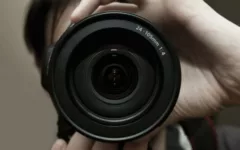Before the advent of the digital camera, there wasn’t much innovation in photography. Films became smaller and more sensitive, but that was the extent of the changes. Companies like Leica have been making nearly the same physical camera for 100 years. These are so close that if you brought a modern Leica back in time to Henri Cartier-Bresson, one of the first photojournalists and modern street photographers, he’d be able to use it without any trouble.
Digital cameras, on the other hand, have only been in consumer hands for about 20 years and have made huge leaps forward in regard to innovative technology, making the originals almost unrecognizable. Here’s why:

Digital Sensors
While film can be affected by many factors and the true resolution you can get is debatable, the resolution of digital sensors has improved significantly compared to only a few years ago. The first digital sensors were barely able to break the megapixel barrier, and today’s cameras have 36 megapixels and higher, with the highest being 50 megapixels on the Canon 5Ds/R.
Beyond the resolving power, current sensors have the ability to see in almost complete darkness, which is something film has never been able to do. The best low-light performance for film is around 3,200 ISO, and it develops with a grainy, photojournalist look. Today, sensors can push ISO to 100,000 or above (a five stop difference) while still retaining an enormous amount of color data and detail.
Autofocus
Autofocus has become so fast that some manufacturers are removing some of the manual focus functions from their lenses. While not completely gone, these lenses use electronic focusing rather than mechanical. Because of the nature of focus by wire, manual focusing on these lenses is affected by the speed and distance you turn the focus ring.
DSLRs used to be the only type of camera that had fast autofocus functions. This was for several reasons: the technology had been around longer for DSLRs and the larger bodies mean you don’t have to choose between contrast (slow but accurate) and phase detect (fast but less accurate). While phase detect points may be less accurate, they have been getting better due to software upgrades in recent years. For example, Sony’s new A6300 mirrorless camera has autofocus speeds of 0.05 seconds, which is comparable to many high-end DSLRs.
The other advantage mirrorless cameras have over DSLRs is the number and spread of autofocus points. The DSLRs with the highest number of focus points are the D5 and D500 with 153 points, the A7r Mk 2 and A6300 with 399 and 425 points, respectively.
Mirrorless vs. DSLR
Mirrorless cameras are the fastest growing section of the dedicated camera market. This is mainly because they are physically smaller than DSLRs. Without a mirror, the lens mount can be moved closer to the sensor, which makes for a smaller, lighter body and lenses. Mirrorless cameras also can fill the mirror’s previous space with other electronics.
Another difference between DSLRs and mirrorless cameras is how you view the image. DSLRs need a mirror because they use optical viewfinders, which don’t have a lag between your movement and what you perceive through the viewfinder because you are just looking through a set of mirrors. In comparison, electronic viewfinders (EVFs) are small screens that you hold your eye up to. They have the advantage of being able to show you your exposure and filters before you press the shutter. However, EVFs are typically a few milliseconds behind the actual scene and have a lower resolution.
In-camera technology has been rapidly changing in digital cameras. Between the updated sensors, autofocus and mirrors, digital cameras are able to capture sharper images and do more than ever before. What the next advancements will be, only time will tell.









